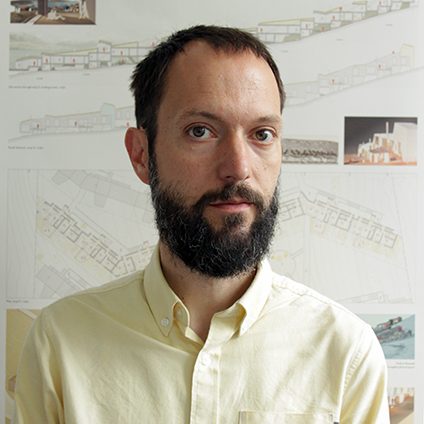Playing, Hacking, Making the Creative City
Making Manchester Gothic? Festivalising urban cultures past and present at Manchester Metropolitan University | L. Ager
The Gothic Manchester Festival is an annual mixed artform festival produced by researchers and staff at the Manchester Metropolitan University (MMU) interdisciplinary Centre for Gothic Studies. Now in its 7th year, the festival emerged from a broad arts and humanities public engagement programme. Members of the Centre work with Manchester’s cultural producers, venue managers and local agencies to present a series of uniquely local, accessible and affordable events: art exhibitions, walking tours, film nights, book readings and night clubs. As a concept, ‘The Gothic’ encompasses a broad and somewhat abstract set of categories and offers a unique mode of intermediation between academic knowledge practices and sites of place-specific expertise, inspiring forms of cultural production in which architectures of knowledge interact with the architecture that orders public space. Festivals are implicated in cultural tourism, cultural memory and the value of tangible and intangible heritage assets, however they can also be carnivalesque acts of resistance, an imaginative, playful and interpretative space in which to examine and reimagine a city’s heritage. Drawing on findings from an AHRC-funded PhD into ‘University festivals’ and a subsequent post-doctoral research project, this paper explores the case of the Gothic Manchester Festival from the perspectives of festival programmers, producers, organisers and audiences. Highlighting this approach to Manchester’s tangible and intangible cultural heritage reveals some contradictory meanings in the in the mediation of the city’s cultural history. It also encourages reflection on how HE is implicated in the production of new urban alliances with diverse cultural agents, responding to the local urban context.
Wonderlooper: Reinventing Sunderland through innovative art making | S. O’Hara
Sunderland is city that is undergoing significant change. Once hailed ‘as the largest shipbuilding town in the world’, Sunderland was recognised as an economic powerhouse. After decades of economic decline, the city is in the process of reinventing itself for the 21st century as a technologically advanced, creative cluster, boasting one of the fastest growing city economies in the UK. Wonderlooper (2018), the winning concept proposed by artist Di Mainstone and curated by Suzy O’Hara, celebrated the opening of the New Wear Crossing road and pedestrian suspension bridge in Sunderland. The artwork was commissioned by Sunderland Culture, fabricated by Fab Lab Sunderland and supported by Creative Fuse North East, University of Sunderland and Sunderland City Council. The project deployed experimental art hack innovation methods to inform its R&D process and mobilised engineers, designers, musicians, programmers, artists and communities on either side of the bridge to collectively invent and make a series of prototypes, mechanical and digital devices that transformed the structure into a giant musical instrument. This paper argues that by forging novel relationships between key stakeholders in the city (government, university, cultural institutions, fabrication labs and communities), Wonderlooper demonstrates a 21st century narrative that challenges popular, often negative perceptions of Sunderland and reflects the city’s new reality. By interrogating the materials, tools and processes employed by Wonderlooper, this paper will help facilitate a more nuanced understanding of the breadth of values and motivations that are driving Sunderland’s transformation forward.
Rethinking Smart Citizenship: Hacking Data-Based Urban Representations of the Public Domain | M. Maldonado
Among contemporary fields of spatial practice, the incorporation of pervasive digital computation technologies has led to a radical reformulation of Urban Design and Urban Governance. The most salient case of this (purportedly) innovative computational shift is the Smart City, which exemplifies the use of technocratic, data-driven approaches to the development of spatial intelligence in the urban field. Its framework is a highly problematic one: It operates under a top-down regime, deploying mechanisms of representation that tackle the city as a singular ‘assembled whole’ where individual subjectivities are ‘averaged’ and the drawing (and subsequent controlling) of informational ‘flow’ is foregrounded as an imperative of maximum optimisation. Tapping into the fields of Anthropology, Design Informatics and Urban Studies, this paper asks: Can we articulate data-based counter-practices that appropriate the computational plateau of Smart Cities, albeit explicitly subverting its narratives of optimisation, efficiency, and top-down ‘smartness’? As a tentative response this paper presents a series of collective urban interventions (developed as part of the author’s academic practice) that predate the technical overlay of the Smart City to leverage both individual and shared subjectivities in the urban public domain. In doing so, it outlines a DIY technological ethos, drawing urban-architectural realities of non-conformity from the activist approaches of Critical Making and Urban Hacking. These ‘practices of digital dissent’ are concerned with friction and collectiveness, and formalise design narratives that explicitly re-situate the locus of urbanity in the domain of the commons, re-establishing the ‘Smart Citizenship’ of granular human and non-human subjectivities as the main operator within the urban millieu.
Chair: Hilary O’Shaughnessy



